
After more than 35 years of operation, TBI is closing its doors and our website will no longer be updated daily. Thank you for all of your support.
YouTube gets original
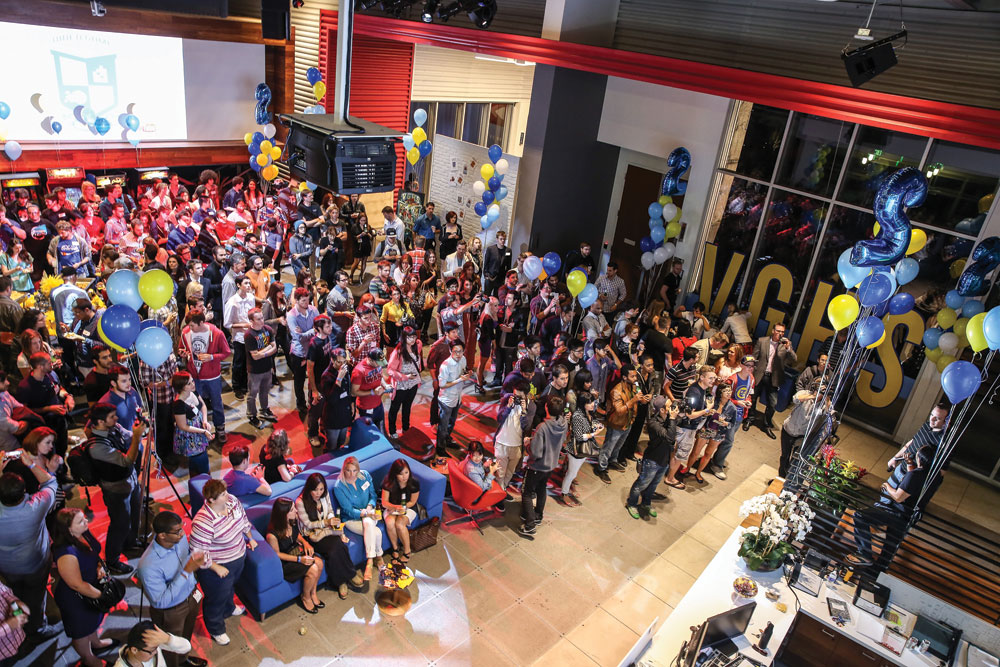 With YouTube channels and their content providers toasted as the talk of MIPTV last week, multichannel operators, TV producers and analysts tell Jesse Whittock why original content is the key to monetising the emerging YouTube ecosystem.
With YouTube channels and their content providers toasted as the talk of MIPTV last week, multichannel operators, TV producers and analysts tell Jesse Whittock why original content is the key to monetising the emerging YouTube ecosystem.
Question: What do a hyperactive Swedish video gamer, a geeky American comic duo and DJ Avicii have in common? Answer: They all featured on channels in the roster of top ten YouTube subscription networks in March 2014, according to data from social analytics website Social Blade.
Sweden’s PewDiePie was until very recently the most popular channel on the Google-owned platform, with nearly 25 million subs and more than 3.8 billion views for Felix Kjellberg’s video game commentaries. Ian Andrew Hecox and Anthony Padilla, better known together as Smosh, have 17 million subs and three billion-plus views, while Swedish DJ Avicii’s official Vevo page has nearly a billion views.
If pure numbers were the only metric, you could argue that these three channels are far more valuable to advertisers and content distributors than CBS, ITV or TF1 could ever be. However, YouTube’s ecosystem is not yet at a stage where it threatens to replace linear TV.
YouTube is still often thought of a schizophrenic mess of random user-generated video and cute animal montages, but for the platform’s owner, Google, and the wider community of digital content producers, that is just scratching the surface.
In October 2011 YouTube announced that it would fund 100 professionally produced channels in the US as part of a US$100 million push to make the platform a genuine contender in the growing digital video network sector. Funded channels later launched in the UK, France and Germany. Meanwhile, as this was happening, MCNs (multichannel networks) including Maker Studios, ChannelFlip, Base79 and Diagonal View were emerging – aggregating hundreds and in some cases tens of thousands of channels of content from professionals and bedroom stars and finding ways to turn click-throughs and young platform-agnostic eyeballs and meaningful revenues and into effective partnerships with brands.
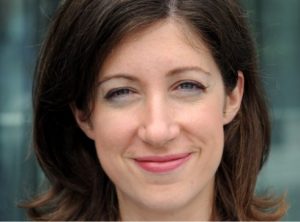 All this was compounded last month when it emerged Disney that had agreed to buy PewDiePie operator Maker Studios in a deal that could eventually be worth US$950 million. Yesterday (April 14), film firm Relativity Media threw its hat in the ring, attempting to hijack the deal with its own near-billion-dollar deal. Maker’s shareholders meet today to discuss the Disney deal.
All this was compounded last month when it emerged Disney that had agreed to buy PewDiePie operator Maker Studios in a deal that could eventually be worth US$950 million. Yesterday (April 14), film firm Relativity Media threw its hat in the ring, attempting to hijack the deal with its own near-billion-dollar deal. Maker’s shareholders meet today to discuss the Disney deal.
“People are starting to realise that there are specific clusters of YouTube audiences that you can target in certain ways, and specific demographics who don’t watch as much TV any more whom you can communicate with through social media in a very effective way,” says Claire Tavernier (above, left), interim managing director of Shine Group-owned ChannelFlip.
Former FremantleMedia digital chief Tavernier joined ChannelFlip this year after the departures of co-founders Justin Gayner and Wil Harris, taking charge of the business’s 200-plus channels and production assets. The firm has produced channels for Ricky Gervais and online series for UK stars David Mitchell (best know for Peep Show), Richard Hammond (Top Gear) and Harry Hill (Harry Hill’s TV Burp).
“The content needs to be commercially viable,” says Tavernier. “It’s not the only thing to consider – it needs to feel like it fits our brand – but at the end of the day we take on projects that are going to be profitable.”
Television producers are fast coming round to Tavernier’s way of thinking and increasingly making businesses out of their content. Barcroft Productions, a London-based indie known for current affairs and documentaries, began using YouTube as a platform for video segments it made for magazine and news programmes.
“All of a sudden, as our white-label video content grew, we started to realise more buyers were finding our content via YouTube than via our [content] sales team. We clocked the fact it could be a great shop window for our content,” says company founder Sam Barcroft.
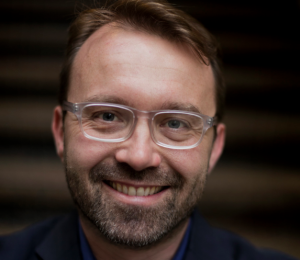 Soon it became apparent that B2B sales weren’t the only new revenue stream. “The by-product was we started building a B2C audience because people started wanting to see what we were putting out,” says Barcroft (right).
Soon it became apparent that B2B sales weren’t the only new revenue stream. “The by-product was we started building a B2C audience because people started wanting to see what we were putting out,” says Barcroft (right).
The firm began drawing revenues from advertising and soon joined the Rightster MCN. More money went into carefully curated exclusive shortform productions – there are now around five uploads a week – and at for a week at Christmas last year, Social Blade stats showed Barcroft overtook the One Direction and The X Factor channels as the most watched YouTube channel in the UK. “It made for a great Christmas work party,” says Barcroft.
The firm has even had Discovery Networks International commission warm-hearted factual series Preposterous Pets, which was pitched with footage and data from the YouTube network.
Like Barcroft, US-based music video business Vevo, which operates channels for popular music acts, targets a young Millennial audience. “Traditional TV is increasingly irrelevant for younger audiences who are turning to online, mobile and TV apps at a very high rate,” says Vevo’s chief revenue officer Jonathan Carson. “Vevo reaches as many Millennials as the biggest TV networks.”
Music videos are the bread and butter of the Vevo business model, but it is increasingly creating its own live concert events and original lifestyle programming. “Our original programming strategy is to produce content that helps viewers and brands connect with other lifestyle passion points,” says Carson. “Where it’s fashion, sports, food, travel – music touches everything that we do, every day.”
 Meanwhile, traditional programme makers have identified an opportunity to use their TV brands to target online audiences. Unscripted prodco Zig Zag Productions recently partnered with online operator Diagonal View to launch a magic-themed YouTube channel, All Time Magic, after a spate of commissions around the theme that saw Channel 4 pick up Troy and Discovery channels in EMEA go for Close Up Kings.
Meanwhile, traditional programme makers have identified an opportunity to use their TV brands to target online audiences. Unscripted prodco Zig Zag Productions recently partnered with online operator Diagonal View to launch a magic-themed YouTube channel, All Time Magic, after a spate of commissions around the theme that saw Channel 4 pick up Troy and Discovery channels in EMEA go for Close Up Kings.
“We’ve become a bit of a magic magnet, and young talent is approaching us,” says Zig Zag CEO Danny Fenton. “It felt like a great opportunity to launch a YouTube channel showcasing them.” Zig Zag is producing 30 minutes of original content a week for the channel, which now forms part of Diagonal View’s ‘All Time’ channels bouquet. Talent includes South Londoner Troy (left), ‘adrenaline magician’ Gerry Sims and Ranjit Singh.
“We self-funded the channel with Diagonal View, and because they’ve got the experience and other channels to cross-promote it, we think of it as educated risk,” adds Fenton. “We’ve learned quickly that a TV production company has to learn to make content for different platforms. That’s not to say we’re going to drop the quality of productions, but we have to make content with a shortform focus in a more cost-effective manner.”
Meanwhile, kids TV producer and IP owner Coolabi sees YouTube as an opportunity to reinvigorate its classic brands, which include Purple Ronnie and Bagpuss. The firm has partnered with Little Dot Studios – the multiplatform channel operator All3Media’s ex-interactive boss Andy Taylor launched last year – to create a bespoke Purple Ronnie channel.
“Content on YouTube is highly shareable and is available on every platform, which helps to future-proof and make the most of the shift to mobile viewing,” says Naomi Dare, the firm’s head of digital. Furthermore, “What helps is that kids’ content tends to be shorter than traditional TV, which is much better for viewing on YouTube,” she adds.
Coolabi is also planning strategies for the Bagpuss, Clangers (which is soon to return to television) and Ivor the Engine brands.
Dare says Coolabi’s channels primarily act as a marketing tool and a way of forming relationships with highly invested consumers, while Zig Zag’s Fenton contends that “the quickest way to profitability is to have multiple channels” and is therefore planning more networks before long. “The economies of scale are there if you can get there quickly,” he says.
As most content creators have found, YouTube is a young person’s medium. Research from the Interactive Advertising Bureau, which organises New York’s Digital Content Newfronts (see box), last year released a report revealing that a massive 45 million viewers were watching originally produced professional digital video in the US every month. Within this number, young adults (18-31) accounted for 31% of all views, markedly higher than other demographics.
As Sherrill Mane, senior VP, research, analytics and measurement at the IAB notes, quoting a separate Nielsen report, “The lightest TV viewers consume the most original online video”.
“Look at how Netflix has changed the way people view the TV experience: the notion of binge viewing didn’t exist until recently,” she adds. “It’s more important than ever to think about sequencing, distribution and windows. There’s a whole generation who grew up in the digital media era and they don’t care about the TV schedule.”
Ironically, one group that does care about the TV schedule is the executives overseeing YouTube channels, as newly created Defy Media’s executive VP Barry Blumberg explains. “Our brands are built with intelligent design from the beginning. They are managed in the same way a television network.
“A lot of traditional rules apply – respect your audience, give them regularly scheduled programming, extend your brand into areas where your audience has affinities, and you want to keep your guys motivated and fresh.”
Defy, which came into being in October 2013 upon the merger of digital content companies Break Media and Alloy Digital, operates comedy hub Smosh, a YouTube channel consistently among the site’s most popular.
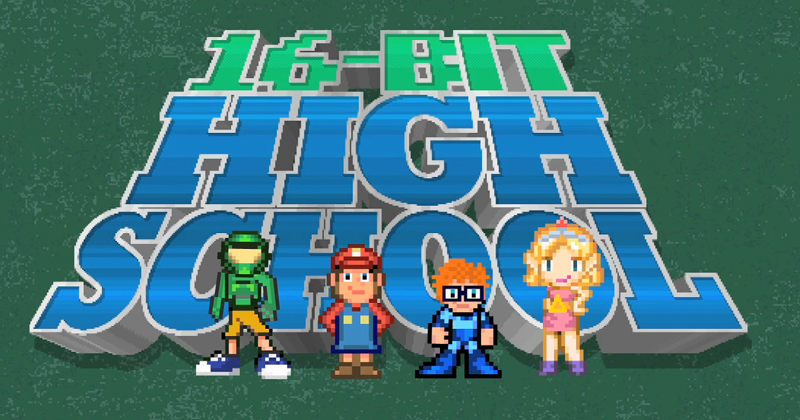 The network, which launched on the Google platform in 2005, has always benefited from investment and professionally produced content. In March, it uploaded a pair of new series, 16 Bit High, featuring video game characters such as Mario dealing with the dramas of a regular high school, and Honest Game Trailers, which puts a cheeky spin on game commercials through snarky voiceovers. “Both are steps forward from the content we’ve been producing for the channel,” says Blumberg.
The network, which launched on the Google platform in 2005, has always benefited from investment and professionally produced content. In March, it uploaded a pair of new series, 16 Bit High, featuring video game characters such as Mario dealing with the dramas of a regular high school, and Honest Game Trailers, which puts a cheeky spin on game commercials through snarky voiceovers. “Both are steps forward from the content we’ve been producing for the channel,” says Blumberg.
Sam Barcroft agrees that treating a YouTube channel with the care an exec would for a television channel yields rewards. “We try to put out a video each day of the week between 45 seconds and four minutes long. The consistency is really important, because the YouTube algorithm rewards a certain type of production value. These are things TV producers wouldn’t get excited about – careful metadata captions and information, good titles and strong thumbnails.”
Learning the “grammar” of YouTube and correctly identifying how much to invest in original content are the main challenges to successfully running a YouTube channel, Barcroft adds. “Online video is entirely different to a TV or news production because it is consumed in an entirely different way – I always say, only half joking, that most videos are watched on the loo.”
Though YouTube as a platform has been an excellent partner for producers, the Google firm’s own track record in the originals space is mixed. Its multi-million-dollar original channels investments, first announced in 2011 for the US and later expanded into Europe, have been scaled back, with insiders referring to the initiative move as simply “proof of concept”. YouTube’s dedicated Originals page was taken down in November, but YouTube reps say many of the channels are successful, with the top 25 averaging more than 5.3 million views a week, and that 115 have more than 100,000 subs – placing them in the top 2% of channels.
YouTube is now more interested in those ‘home-grown’ stars whose channels have millions of viewers. It has production bases in LA, New York, London and Tokyo and marketing capability, and last year launched two themed content initiatives – Geek Week (above, top) and Comedy Week.
ChannelFlip oversaw production of the latter, which ran from May 19-25 and showcased US and UK talent, when Harris and Gayner were still in charge. New boss Tavernier describes the web video platform’s strategy as “focusing on those people who’ve grown up through the platform and are branching out and becoming bona-fide stars in their own right”.
In the same way YouTube’s home-grown stars are coming of age, the wider ecosystem of online digital content is moving toward consolidation – a sure sign high-powered decision makers see the money in the market.
 Lis Murdoch’s Shine bought ChannelFlip in 2012 and, as noted, Maker Studios is joining the Disney stable in a US$500-plus million deal. Elsewhere, Warner Bros. recently led an US$18 million funding round for Machinima. FremantleMedia has acquired stakes in StyleHaul and German diginet operator Divimove and its parent RTL has invested in BroadbandTV. The Chernin Group and Comcast are said to be among investors in leading MCN Fullscreen, while Endemol has revealed a US$40 million play in the shape of digital channel division Endemol Beyond.
Lis Murdoch’s Shine bought ChannelFlip in 2012 and, as noted, Maker Studios is joining the Disney stable in a US$500-plus million deal. Elsewhere, Warner Bros. recently led an US$18 million funding round for Machinima. FremantleMedia has acquired stakes in StyleHaul and German diginet operator Divimove and its parent RTL has invested in BroadbandTV. The Chernin Group and Comcast are said to be among investors in leading MCN Fullscreen, while Endemol has revealed a US$40 million play in the shape of digital channel division Endemol Beyond.
“Digital video is the fastest-growing area of the global content market, and digital platforms not only is the content itself different but also the way it is consumed. The key is for us to invest in both original content and audience development,” says Endemol Beyond International MD Georg Ramme (right).
Break Media and Alloy Digital’s 2013 merger created a company strong among younger audiences and females through Alloy and men through Break, Barry Blumberg notes.
“There will be continued consolidation in the market,” he says. “From a viewer or advertiser perspective, there is way too much content out there, and there is not enough differentiation between what is being produced. As larger companies are formed or come into the space you’ll see content that is higher end and more viewer- and advertiser-friendly.”
DIGITAL ORIGINALS: A BUYER’S MARKET
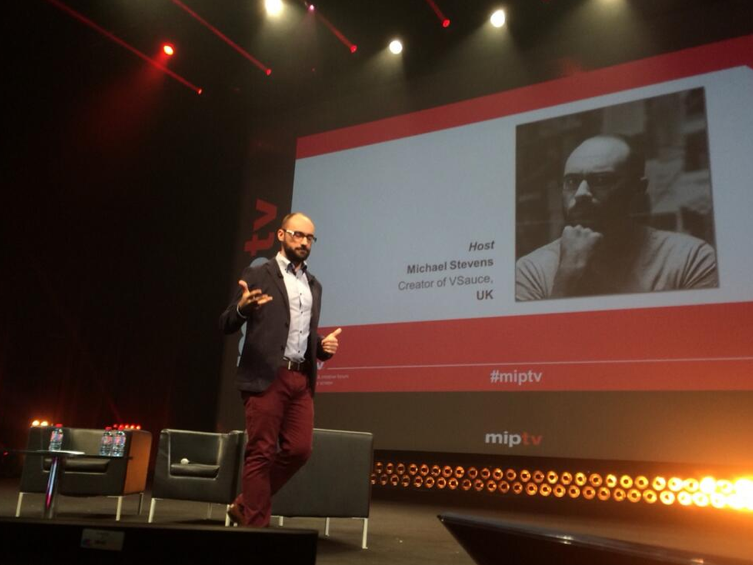 This year at MIPTV, Reed MIDEM launched the MIP Digital Fronts, an event Laurine Garaude describes as “the first international market for digital content”.
This year at MIPTV, Reed MIDEM launched the MIP Digital Fronts, an event Laurine Garaude describes as “the first international market for digital content”.
“There is a real demand for discovering new talent from the online space,” says Garaude, Reed MIDEM’s television division director, explaining the move. One thousand of the 4,000 buyers at MIPTV this year were acquiring for digital platforms, she adds.
The event, at the Palais des Festivals in Cannes, was held on April 9-10 and see original digital video programming presented to buyers, advertisers, strategists, agencies and distributors from a variety of content creators.
 Founding partners include YouTube, which present a showcase of channels and talent; channel operator Maker Studios, whose executive chairman Ynon Kreiz will was scheduled to deliver a keynote but upon the event was unable to do so, with international president Rene Retchtman stepping in; France-based platform Dailymotion and youth brand Vice Media, whose CEO Steve Smith responded to questions of whether the firm is a ‘TV’ or ‘digital brand’ by saying: “I don’t give a sh*t. All I care about is the content.”
Founding partners include YouTube, which present a showcase of channels and talent; channel operator Maker Studios, whose executive chairman Ynon Kreiz will was scheduled to deliver a keynote but upon the event was unable to do so, with international president Rene Retchtman stepping in; France-based platform Dailymotion and youth brand Vice Media, whose CEO Steve Smith responded to questions of whether the firm is a ‘TV’ or ‘digital brand’ by saying: “I don’t give a sh*t. All I care about is the content.”
Michael Stevens, creator of YouTube channel group VSauce, presented the event (above), while US restaurant chain Chipotle Mexican Grill and veteran actor Ray Wise (Twin Peaks) presented a session on their Farmed and Dangerous web satire (pictured), which launched on Hulu in February.
Barcroft held an upfront in association with Rightster, where they presented videos such as Snake Eats Crocodile and explained how an MCN can back a content producer, and vice versa. “Barcroft are the content experts, incredible at picking out these stories,” said Rightster founder Muirhead. “Our job is to make sure all those experiences get shared across platforms.”
 Collective Digital Studio, which ProSiebenSat.1 is an investor in, showcased series such as action comedy Video Game High School (above). The show, now into its third season, is coproduced with Freddie Wong’s RocketJump, which has entered into a multi-year content and marketing deal with Lionsgate.
Collective Digital Studio, which ProSiebenSat.1 is an investor in, showcased series such as action comedy Video Game High School (above). The show, now into its third season, is coproduced with Freddie Wong’s RocketJump, which has entered into a multi-year content and marketing deal with Lionsgate.
“MIPTV has created an important international platform for online video, and the new event offers a forum for Maker creators to showcase their talents on a global scale and connect with the digital entertainment community,” Maker’s Kreiz, formerly CEO of Endemol, told TBI just days before Maker’s US$500 acquisition million by Disney was announced.
Garaude says inspiration for the event came from the digital advertising trade body IAB-organised Digital Content NewFronts, the digital equivalent of the US TV Upfronts.
The precursor to the current form of the event began in 2008, when ad firm DigitasLBi decided an event was needed to bring digital content makers together with advertisers. In a bid to widen the appeal of the event, it asked the IAB to take over the running of the event ahead of the 2013 NewFronts.
YouTube also held an Upfront week in the UK last year. Clearly, digital video markets are becoming increasingly important to the online content ecosystem because they can “create and move a market where money moves”, says IAB’s senior VP Sherrill Mane. “That’s what advertisers care about.”
But why should traditional TV companies care? Because, Mane argues, the converging worlds of television and digital mean “you cannot stop at TV” anymore.




